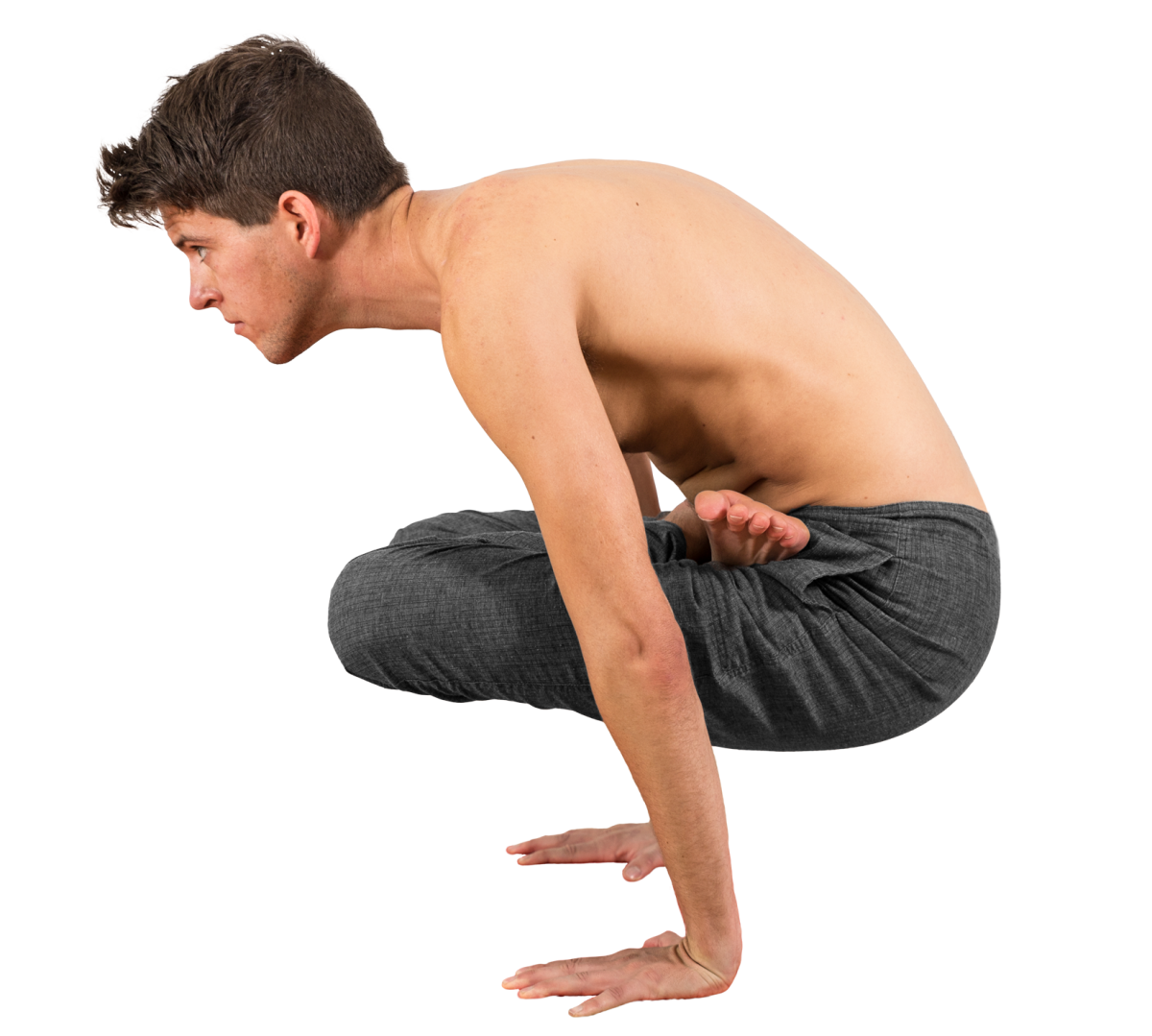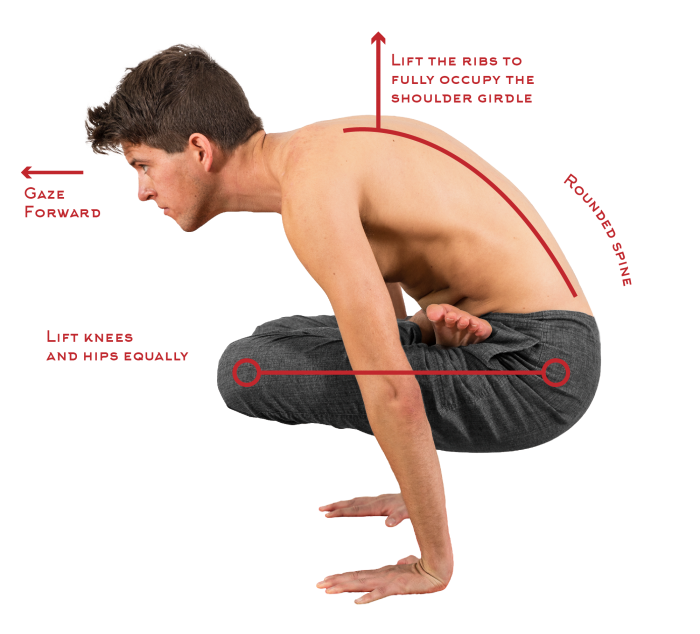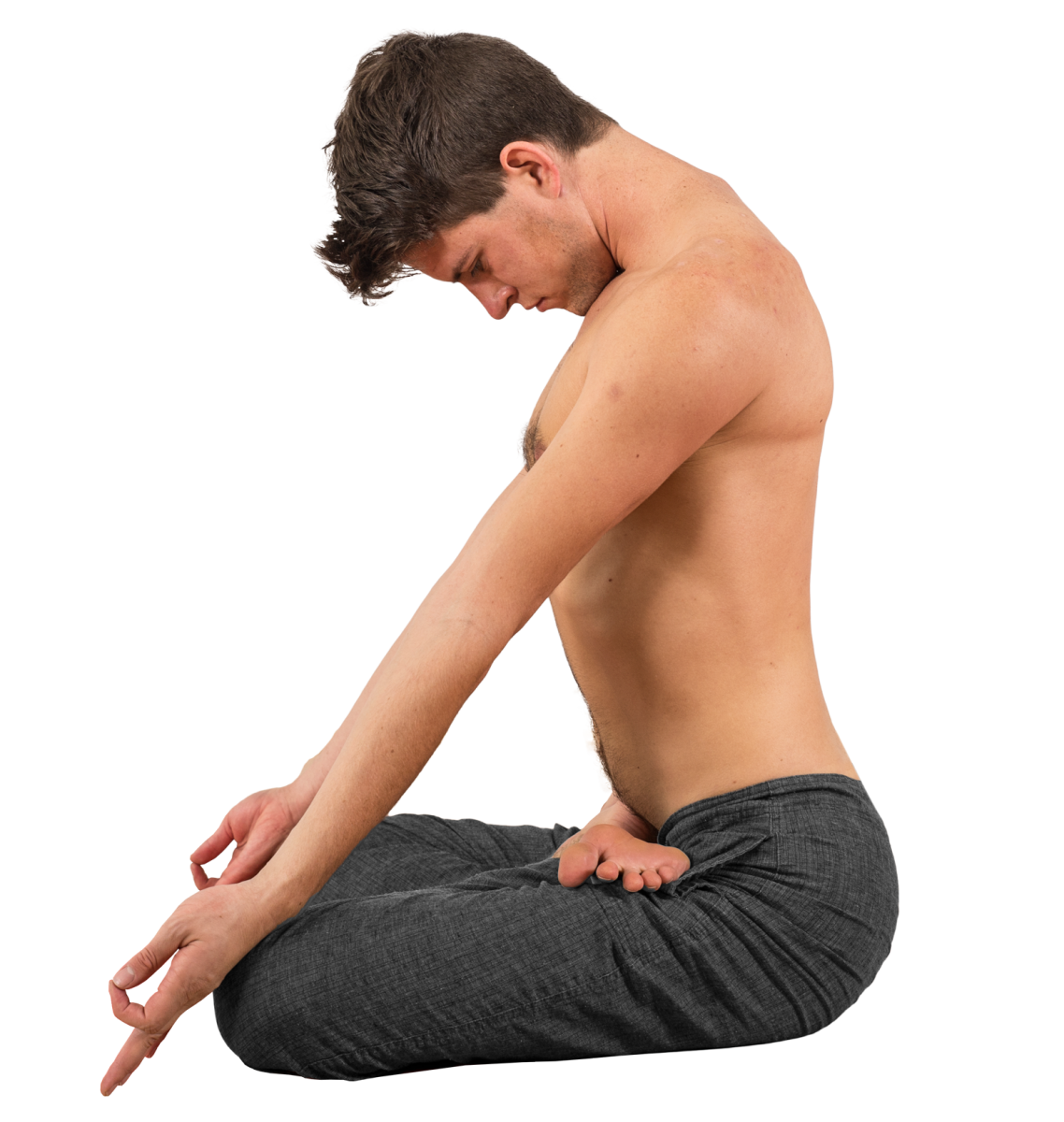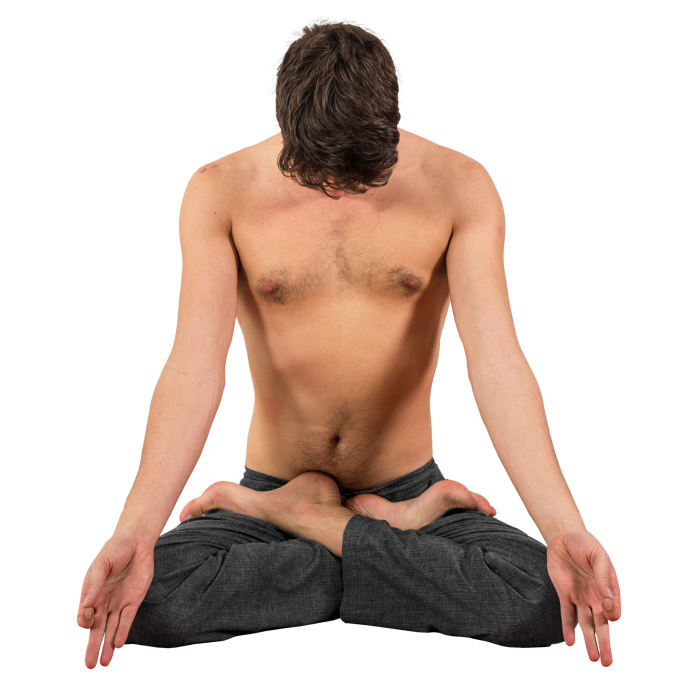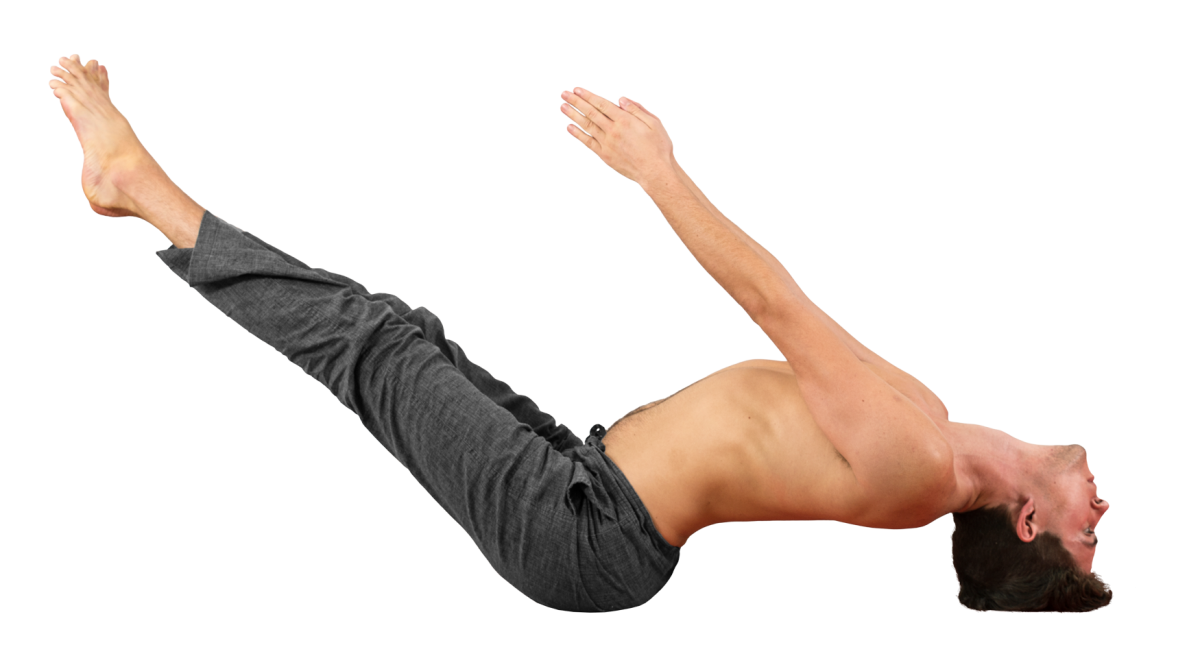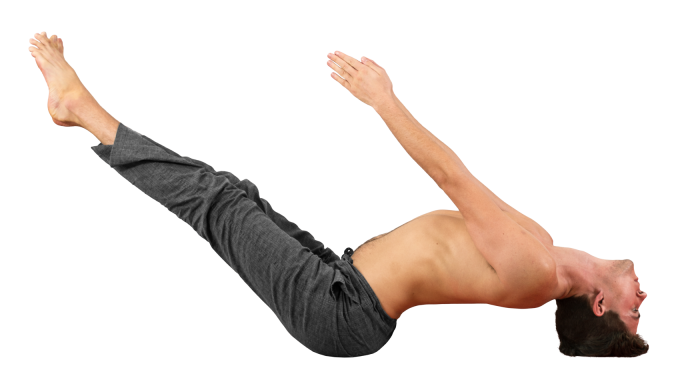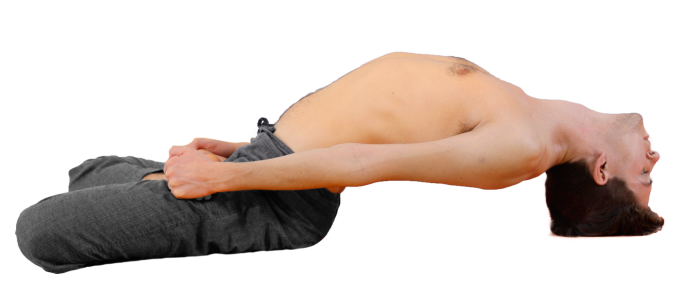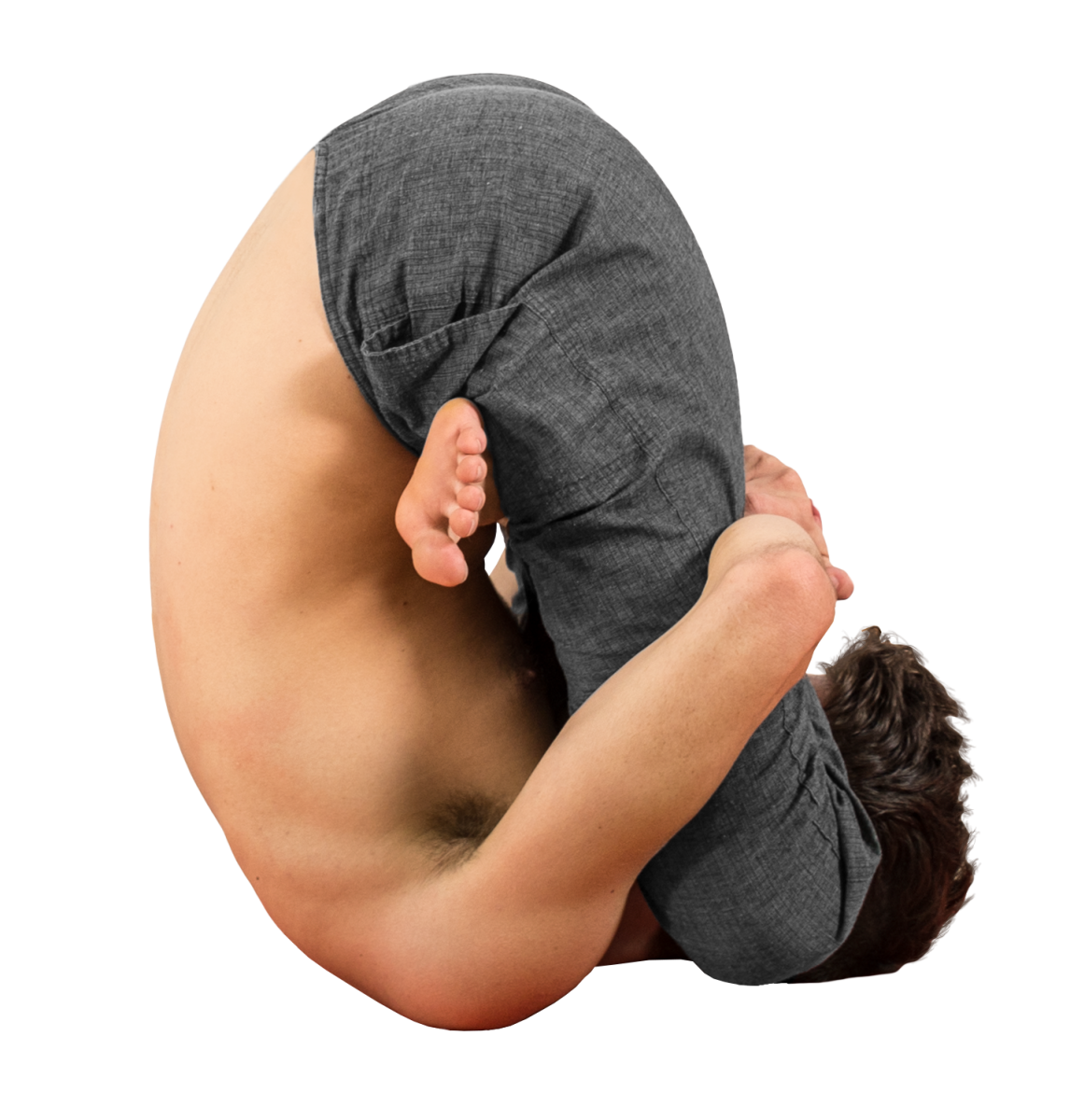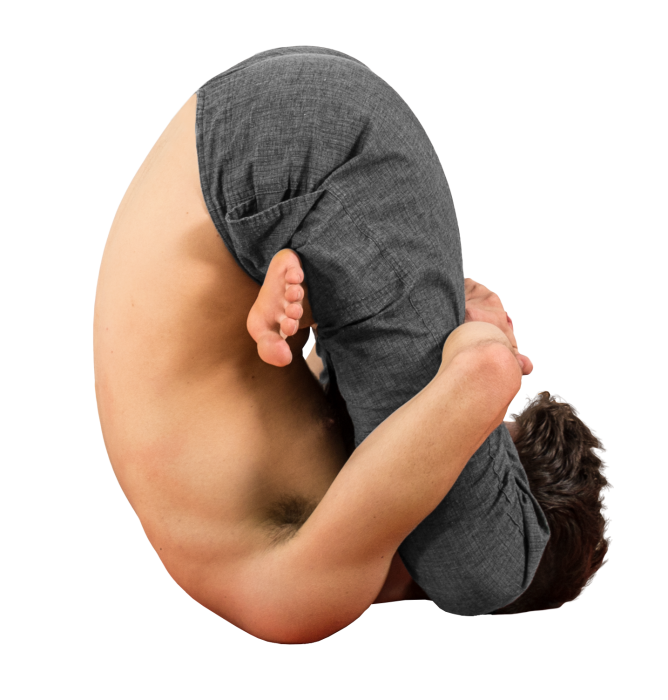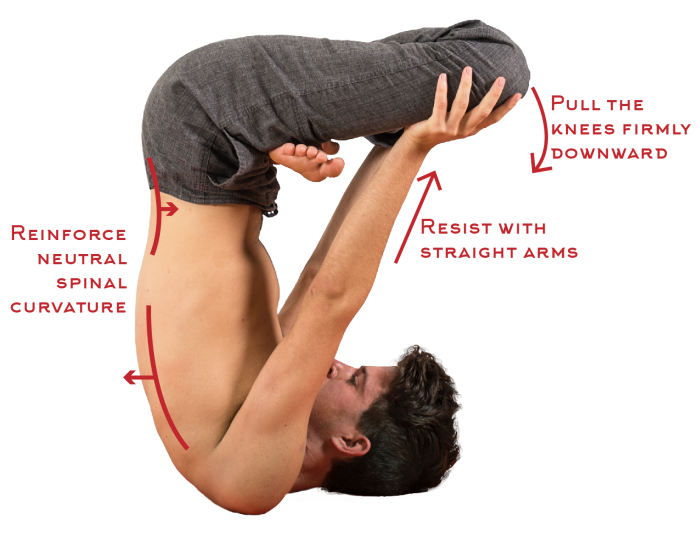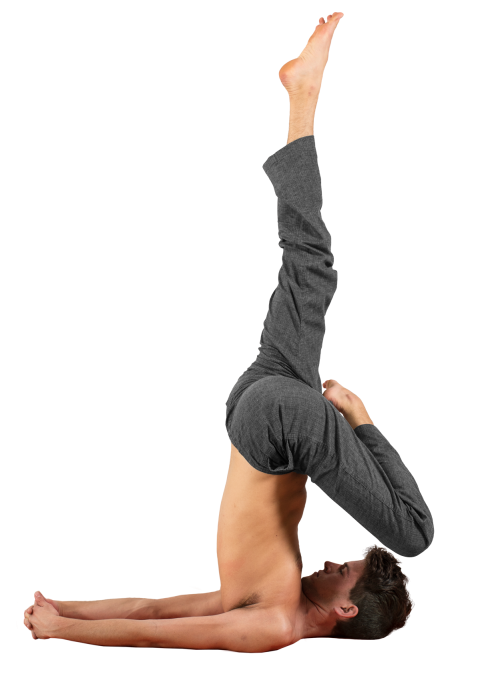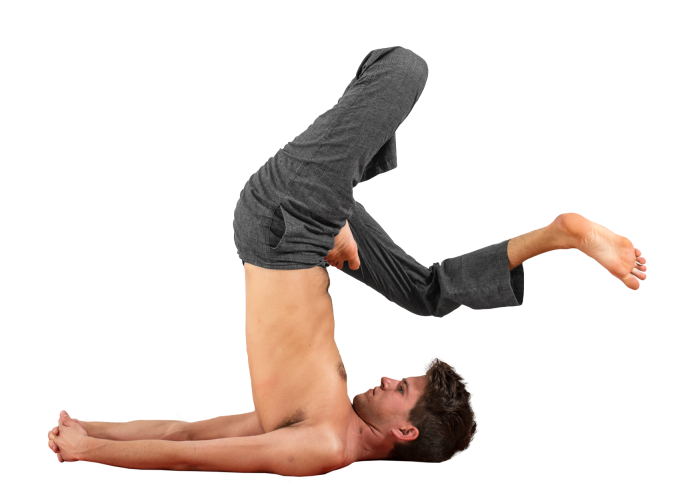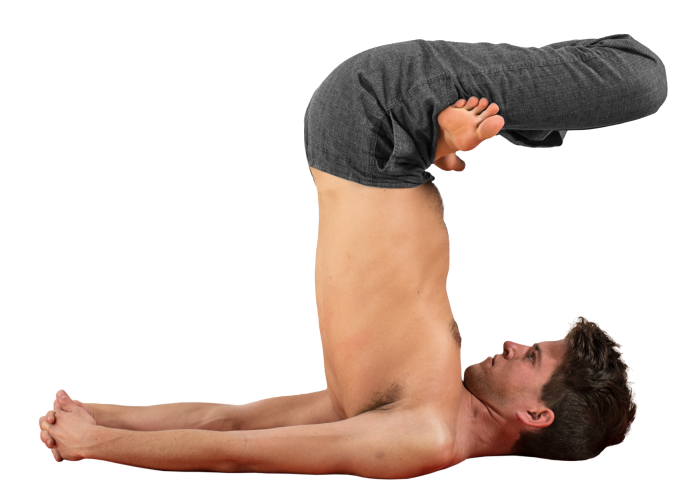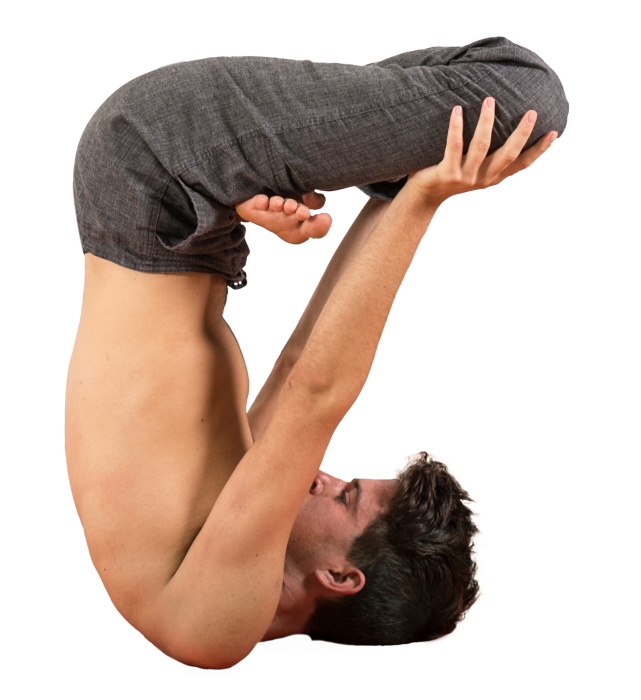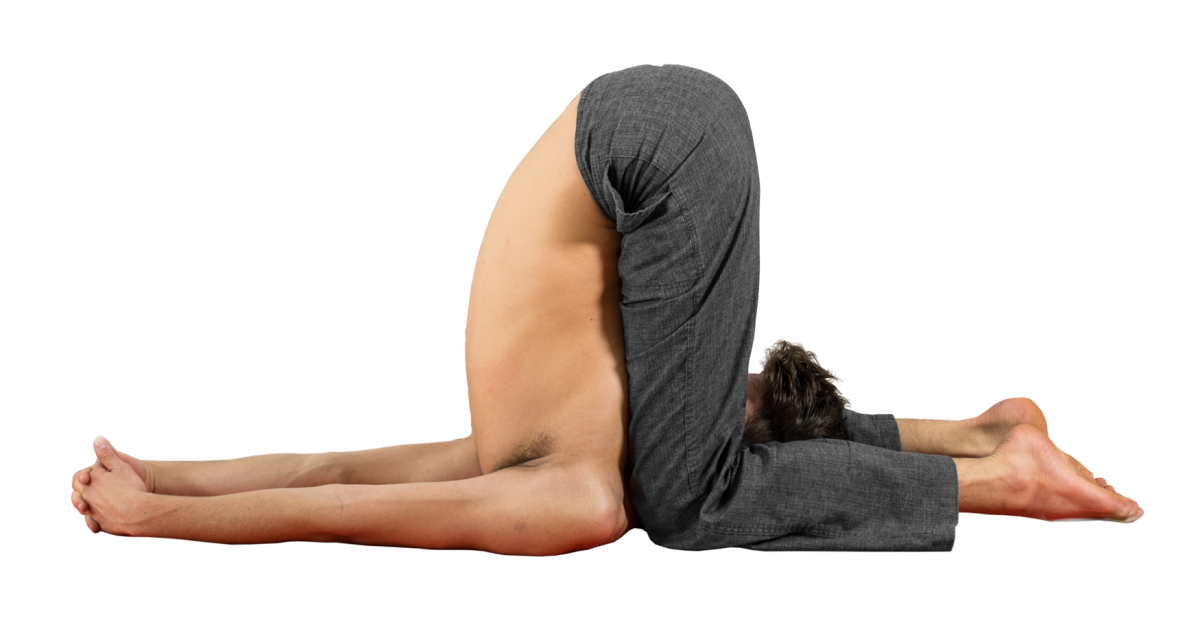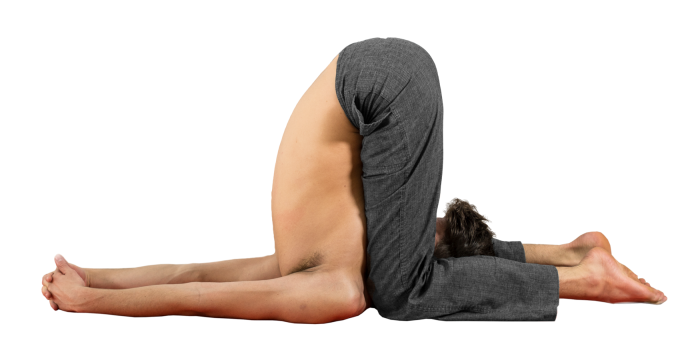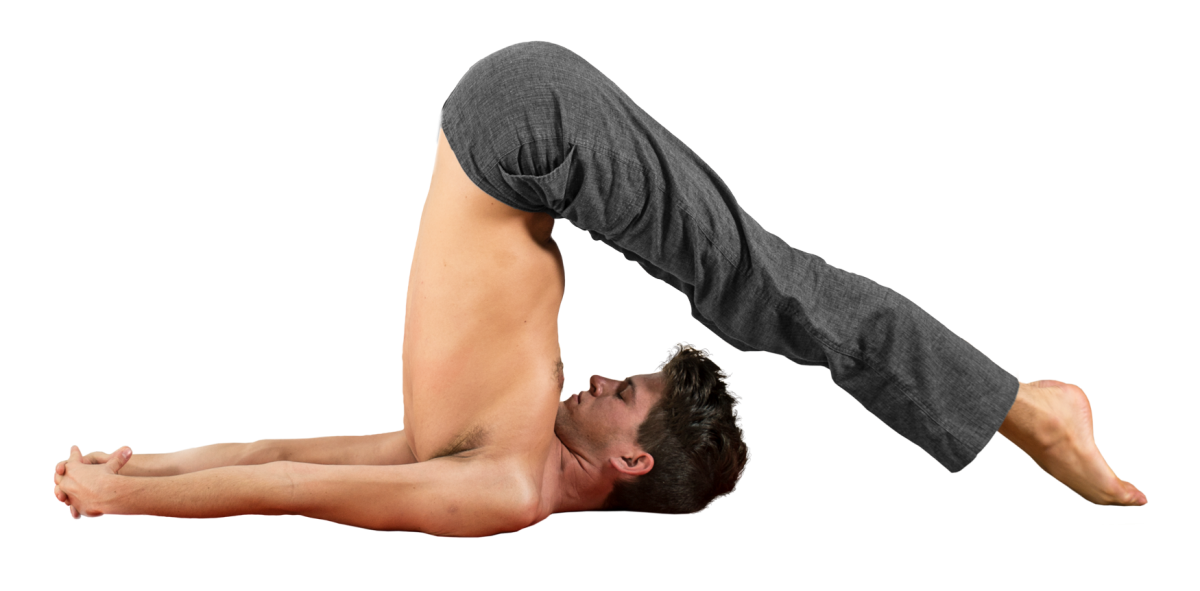FOCUS ON…
It is important that the weight of the body be borne on the forearms, rather than on the head. This means that careful alignment, control, and shoulder strength is necessary. As one of the final postures of the series, the practitioner should have developed sufficient strength by the numerous repetitions of lifting up and jumping between various asana. Though this is a beneficial pose for all practitioners, it should not be approached before the time is right: beginners ought to wait several months before incorporating this asana unless they possess significant preexisting shoulder strength.
The positioning of the hands in this style of headstand is the best for beginners. Though it has become vogue in some circles for beginners to try “tripod” headstands because of perceived ease, there is greatly increased risk of injury to the neck if the weight of the body is on the cervical spine. However, over time and with diligent practice, the muscles of the neck do strengthen, and in fact, the bone density of the cervical spine increases. (This increase in bone density may help to prevent the extremely common spinal microfractures that affect the majority of elders.) We see the appearance of headstand variations that increase the amount of weight on the head at the end of the 2nd series, at which time the practitioner has had adequate time to become comfortable, strong, and competent in the Sirsasana position.
To find the correct hand, arm, & head position:
Wrap each set of fingers around the opposite elbow. This creates a fairly equilateral triangle between the hands and elbows. Watch out for the prevalent tendency of the elbows to slide farther and farther part, which creates trouble in maintaining strength and balance.

Keeping the elbows in place, bind the hands firmly together. Fingers interlaced, palm to palm. Tuck the bottom pinky finger inside your fist so it doesn’t get crushed. Many people try to lace the fingers but not put the palms together. Do not allow this! When the palms are not together, the forearms can rotate freely. They will rotate externally and prevent you from exerting strength.

Place the head down so that it touches the wrists. When you’re lifted in headstand, pull the head into the wrists, not down into the floor.
The head may contact the ground anywhere between the hairline and the crown of the head. Experiment and go with the position that feels most natural to you.
Lifting Up
I highly advise against hopping, jumping, bouncing or springing into Sirsasana: LIFT BOTH LEGS SIMULTANEOUSLY WITH CONTROL.
Do not focus on the legs. Though it may seem that getting the legs straight up is the course of action here, that is a misdirection.
Focus on your spine and make the action of backbending: contract the muscles along the spine. The pelvis will begin to tip anteriorly. This action will make the legs weightless and lift up effortlessly.
If possible, keep the legs very straight and enthusiastically active the entire time. The less the legs move around or wobble, the easier time you will have both lifting up and balancing in the final position.
Troubleshooting
Having trouble with headstand? I see two common obstructions that hold students from Sirsasana:
- Hands won’t stay together, elbows won’t stay put, arms don’t make a firm foundation ⇒ Lack of arm/shoulder strength
- Can’t lift up with control ⇒ Hamstrings are immobile, or lack of spinal muscle strength
In either case: Stop trying to do Sirsasana! Keep working on Primary series to solve the aforementioned problems. This isn’t a good asana to be ambitious with; it will be easily within reach once the prerequisites have been mastered. There is no reason to do it poorly, especially since the risk of injury is high if done improperly.
Vinyasa of the Pose
From Adho Mukha Svanasana, lower the forearms to the ground. Bind the hands and place the head.

Inhale, lift up.
Hold for 25 breaths.

Exhaling, lower to Ardha Sirsasana (aka Urdhva Dandasana) for 10 breaths.
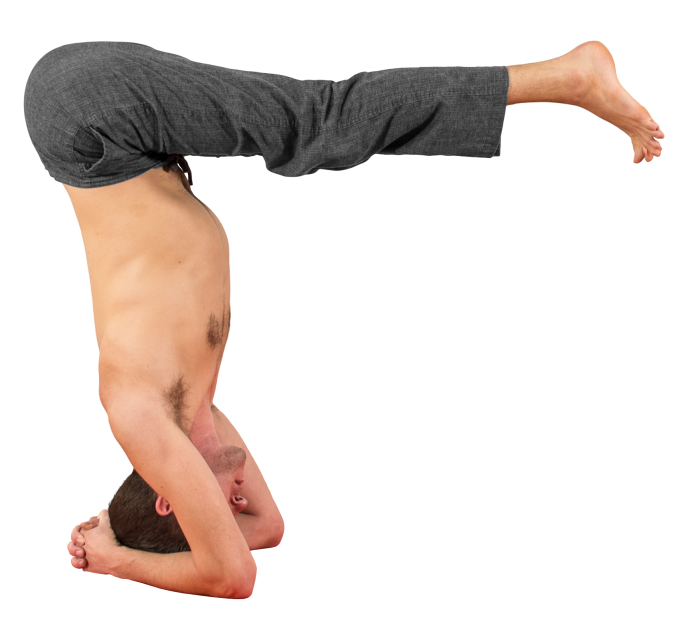
Inhale, return to Sirsasana. Lift the head off the ground and hold for 10 breaths.
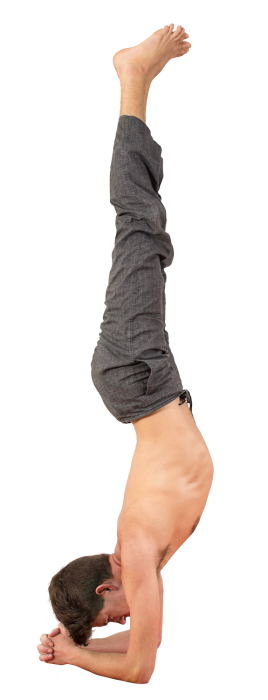
Exhale, gently set the head back down. Slowly lower the feet to the ground.
Keep the head on the ground, let the hips sink to the hips (Balasana). Spend 10 breaths here, or until you feel your blood pressure has equalized.



